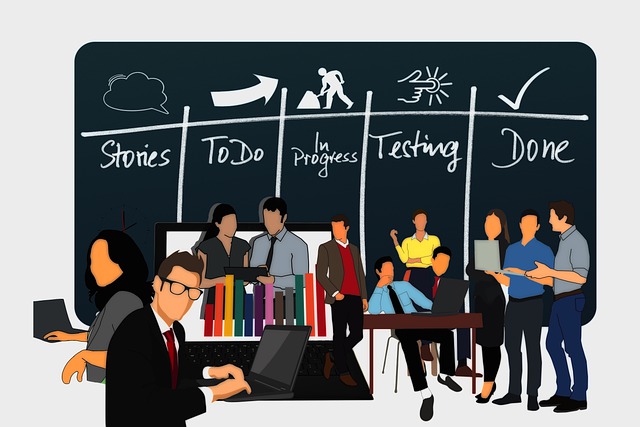Kanban is a popular method for managing workflow and improving efficiency in teams. It involves visualizing work, limiting work in progress, and optimizing flow to create a more efficient and effective process. Implementing Kanban can be a great way to improve your team’s productivity, but it is important to approach it carefully and thoughtfully to ensure success. In this article, we’ll discuss some lessons learned and best practices for implementing Kanban.
Lesson Learned: Start Small
One of the biggest mistakes teams make when implementing Kanban is trying to do too much at once. It’s important to start small and gradually build up your Kanban system over time. This can help ensure that everyone on the team understands the process and is comfortable with it before moving on to more complex workflows.
Best Practice: Map Your Workflow
Before implementing Kanban, it’s important to map out your team’s workflow. This involves breaking down your work into smaller tasks and identifying the steps required to complete each task. This can help you identify bottlenecks in your process and determine where you can improve efficiency.
Lesson Learned: Focus on Flow
The goal of Kanban is to optimize flow, which means reducing bottlenecks and improving the speed and efficiency of your workflow. To do this, it’s important to focus on the flow of work through your system. This involves identifying areas where work is getting stuck and finding ways to eliminate those bottlenecks.
Best Practice: Visualize Your Workflow
Visualizing your workflow is a key component of Kanban. This involves creating a visual representation of your workflow that everyone on the team can see. This can be as simple as a whiteboard or a digital Kanban board. By visualizing your workflow, you can easily see where work is getting stuck and identify areas where you can improve flow.
Lesson Learned: Limit Work in Progress
One of the key principles of Kanban is to limit work in progress. This means only working on a certain number of tasks at a time to prevent overloading the system. Teams that try to do too much at once can quickly become overwhelmed and productivity can suffer.
Best Practice: Set WIP Limits
Setting WIP limits is an important part of implementing Kanban. This involves deciding how many tasks your team can work on at once and limiting work to that number. By doing this, you can ensure that your team is focused on completing tasks and that work is flowing smoothly through the system.
Lesson Learned: Continuously Improve
Kanban is an iterative process, which means it’s important to continuously review and improve your workflow. Teams that are successful with Kanban are constantly looking for ways to improve their process and eliminate bottlenecks.
Best Practice: Conduct Regular Retrospectives
Conducting regular retrospectives is an important part of the Kanban process. This involves reviewing your workflow and identifying areas where you can improve. By doing this regularly, you can ensure that your team is always working towards improving efficiency and productivity.
Lesson Learned: Communicate Effectively
Effective communication is critical when implementing Kanban. It’s important to ensure that everyone on the team understands the Kanban process, including how work flows through the system, how WIP limits work, and how to visualize the workflow. It’s also important to communicate any changes to the process or the board with the team to ensure that everyone is on the same page.
Best Practice: Hold Regular Stand-Up Meetings
Regular stand-up meetings can help facilitate effective communication within the team. These meetings provide an opportunity to discuss progress, identify any issues, and ensure that everyone is aligned with the goals of the project. They also allow for quick adjustments to be made to the Kanban board as needed.
Lesson Learned: Build a Culture of Continuous Improvement
A key part of Kanban is building a culture of continuous improvement. This means creating an environment where the team is constantly looking for ways to improve the process and eliminate waste. It also means encouraging experimentation and taking calculated risks to find new ways to optimize the workflow.
Best Practice: Encourage Experimentation and Feedback
Encouraging experimentation and feedback is an important part of building a culture of continuous improvement. This means allowing team members to try new approaches, test new ideas, and provide feedback on the effectiveness of the process. By doing this, the team can find new ways to optimize the workflow and continually improve their performance.
Lesson Learned: Address Resistance to Change
Resistance to change is common when implementing Kanban, especially if the team is used to working in a different way. It’s important to address this resistance and provide support to team members to help them understand the benefits of the new process.
Best Practice: Provide Training and Support
Providing training and support is an important part of addressing resistance to change. This can include training on how to use the Kanban board, how to set WIP limits, and how to visualize the workflow. It can also involve providing support and guidance as team members adjust to the new process.
Also read: How to Expand your Online Tutoring Business?
conclusion
Implementing Kanban can be a great way to improve your team’s productivity and efficiency. By starting small, mapping your workflow, focusing on flow, limiting work in progress, and continuously improving, you can create a Kanban system that works for your team. Remember to approach Kanban thoughtfully and carefully to ensure success.

